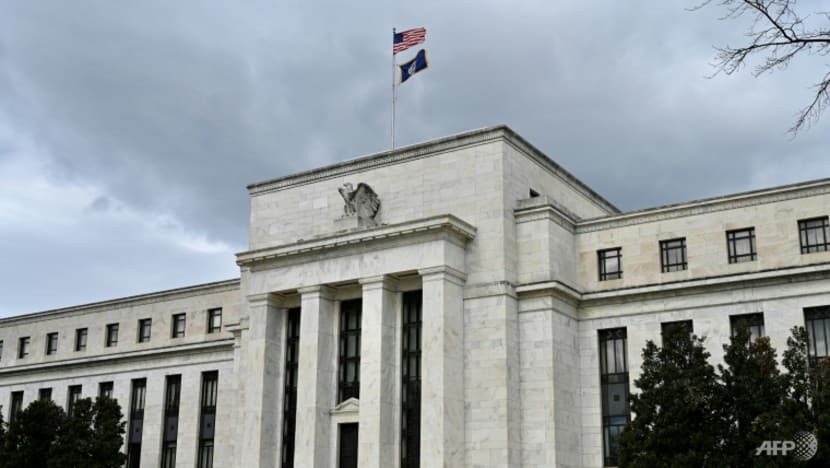Central banks likely to continue with smaller rate hikes in the first half of 2023: Economists
Central banks have been jacking up interest rates to wage war on surging inflation.

SINGAPORE: Central banks around the world will likely continue with smaller interest rate hikes in the first half of 2023 in the fight against soaring inflation, and could put the rates on hold through the rest of the year, said economists on Thursday (Dec 22).
Central banks have been jacking up interest rates to wage war on surging inflation, which has led to the cost of money creeping up.
The Bank of Korea might have been the first central bank in a major economy to lift interest rates, when it did so in August last year amid the COVID-19 pandemic, but the United States Federal Reserve has led the way this year, raising rates by more than 400 basis points.
“We'll probably see central banks continue with smaller hikes, perhaps 25 basis points, one or two hikes as we get into the first quarter of next year, partly to keep pace with the Federal Reserve's, so that interest rate spreads don't widen too much between this part of the world and the United States,” said Moody’s Analytics’ chief Asia-Pacific economist Steve Cochrane.
“That also should help take some of the pressure off of local currencies, given the US dollar strength has been so troubling for currencies in this part of the world.”
SMALLER RATE HIKES EXPECTED
The steep rate hikes by the Fed to fight red-hot inflation this year have caused a major correction in US equities, with collateral damage to other stock markets globally.
“As you get toward the mid-year, I think at that point, the level of rates is going to be sufficiently high …” said Citi’s chief global economist Nathan Sheets. “And at that point, I think central banks are going to feel comfortable putting rates on hold through the second half of the year.”
The Fed is likely to push ahead with plans to slow interest rate hikes next year. On Dec 14, it raised interest rates by 50 basis points, taking the rate to between 4.25 and 4.5 per cent – the highest in 15 years.
“In some sense, we may be seeing peak inflation,” Dr Sheets told CNA’s Asia First. “But what's also true is that the level of inflation right now is very high. And the central bank's sense is that such high inflation is a threat to their credibility.
“They feel like they need to move preemptively to address the inflationary pressures, and to do everything they can to get the inflation that we're seeing in various economies around the world back down closer to their targets.”
He noted that the energy price shocks in Europe have caused inflation to rise, while tight labour markets and rising wages are pushing up services inflation in many other economies.
“So there's still a lot of inflation out there,” he added. “The overall level of inflation is too high, and that's what the central banks are reacting to.”
Dr Sheets believes the higher rates “are likely to put a clamp on borrowing going forward”.
“I mean, frankly, we're already seeing that in a very pronounced way in the US housing market, which is one part of the economy that's starting to slow,” he added.
But not all are following the absolutes of the Fed rate increases. The People’s Bank of China, for instance, has unexpectedly cut rates to deal with a property slump and an economy wrecked by strict COVID-19 lockdowns.
RISING US DOLLAR
The higher interest rates led to the US dollar strengthening against most Asian currencies.
The dollar has made strong gains against the Japanese yen, which has been weighed down by the Bank of Japan’s policy of controlling longer-term yields.
On Tuesday, the BOJ made a surprise tweak to its bond yield control to allow long-term interest rates to rise further. It is allowing the 10-year yield to move 50 basis points either side of the 0 per cent target, which is wider than the previous 25-basis-point band.
It "was becoming a bit untenable" to keep the yield curve the way it was, said DBS chief economist Taimur Baig, adding that the move aims to make the yield curve look more realistic.
He told CNA’s Asia First on Wednesday: “The second part, which I think is what the market is trying to digest, is if a country that has struggled with deflation for the greater part of a decade or two is getting worried about inflation, what does it mean for the whole world economy in 2023?”
The surprise move is a “very small one” and unlikely to have much significant impact, said Dr Cochrane.
“But at the same time, the central bank announced an increase in purchasing government bonds, which has an opposite effect on the economy and on interest rates. So it doesn't really look like there is a significant shift in policy and I think markets have recognised that.”
HAS INFLATION PEAKED?
Inflation in Asia, while high, is starting to come down, said Dr Cochrane.
“If you look at the top line inflation, it did seem to peak across most of the Asia-Pacific region about two months ago. We're seeing that come down a little bit, that's a good sign,” he added.
However, food prices, in particular, are high and still rising, said Dr Cochrane. “And this is a concern for central banks around the region, particularly in the emerging markets of Asia, because food is such a large component of the consumption basket.
“Central banks in the Asia Pacific are going to be very focused on this. We'll certainly see, I think, some continued tightening of interest rates going forward over the coming several months, to make sure that inflation is contained here as well as it hopefully will be elsewhere in the world.”
Surprisingly, “the global consumer has been quite resilient”, said Dr Sheets, adding that the tight labour market and wage inflation has continued to put a fair amount of income in consumers' pockets.
“Broadly speaking, the global consumer has continued to spend quite vigorously, and I think part of it has been (because) they accumulated significant savings during the pandemic. And those savings are being drawn down and that's supporting expenditure.”















